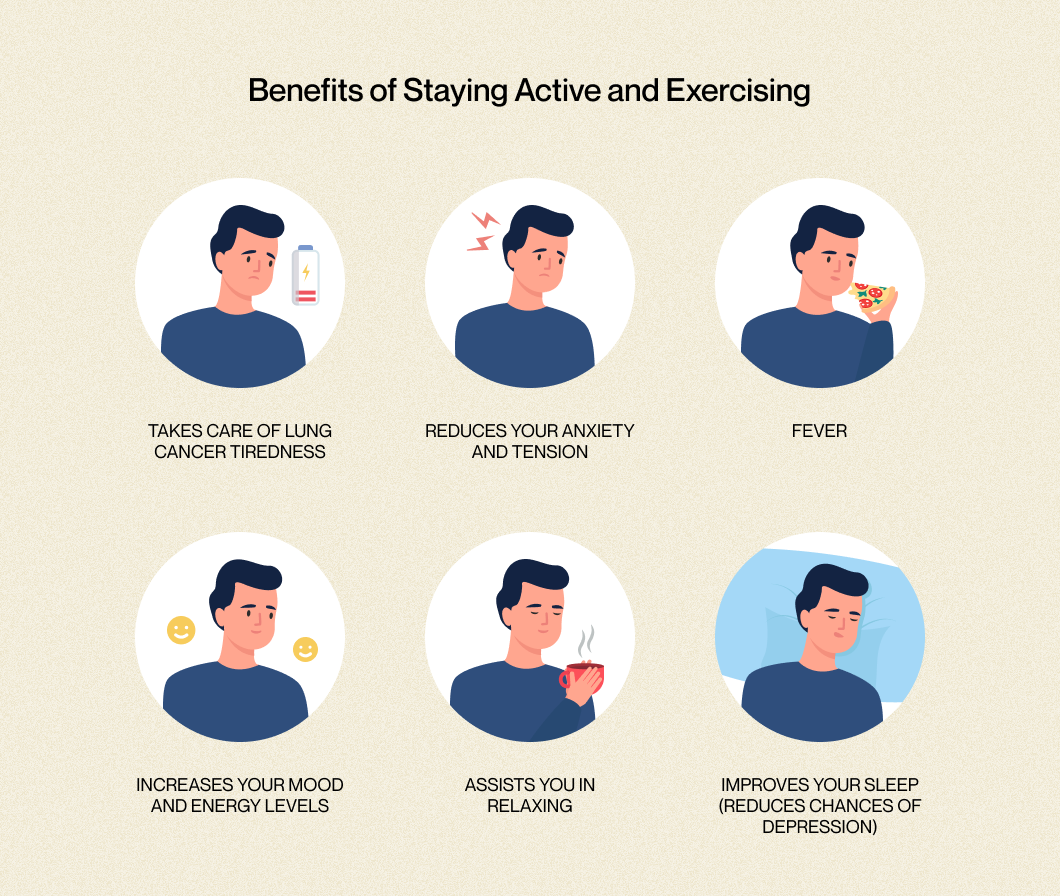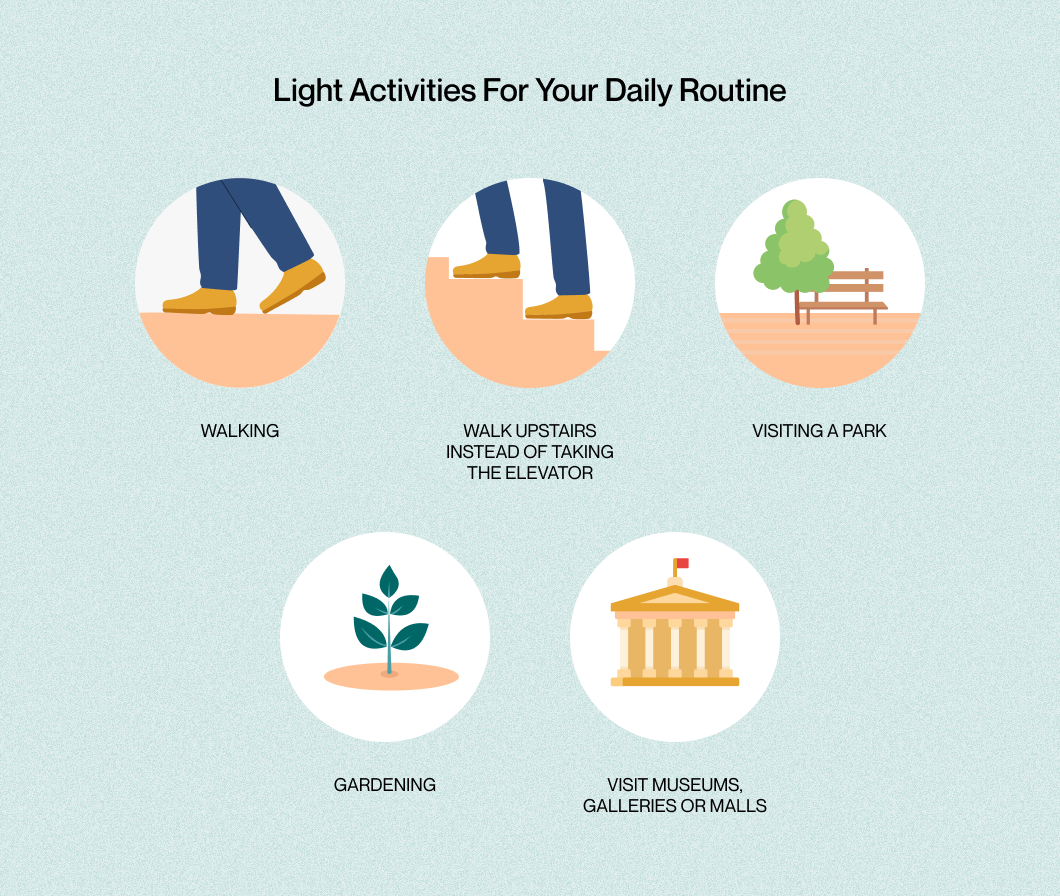Benefits of Staying Active
Putting together an appropriate program of breathing, walking, stretching, and strength training will help you deal with your sickness while also increasing your energy and endurance. You may be able to join acceptable locally organized workout programs.
Before you begin, please consult with your lung cancer team, GP, or physiotherapist if you have any concerns.

